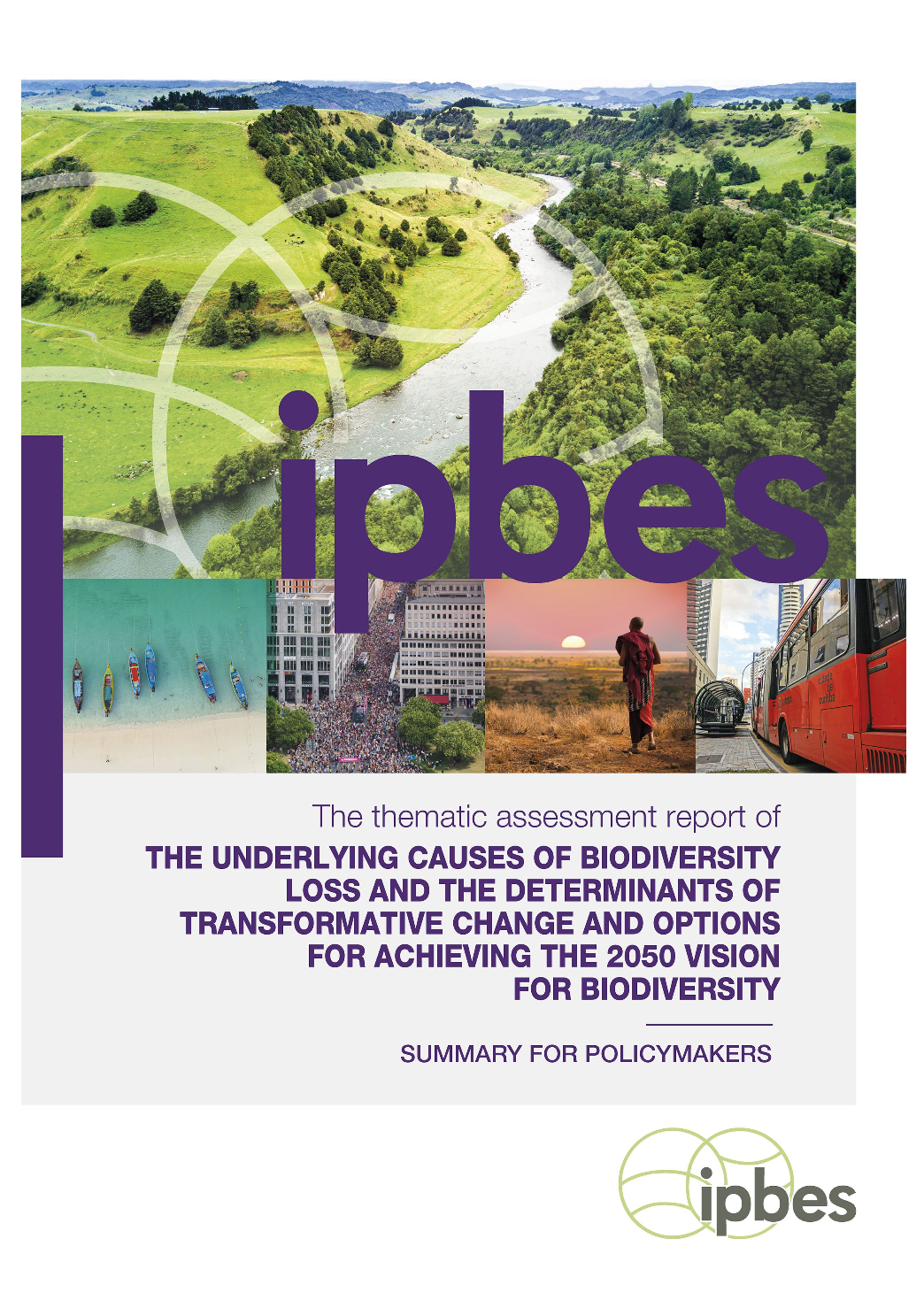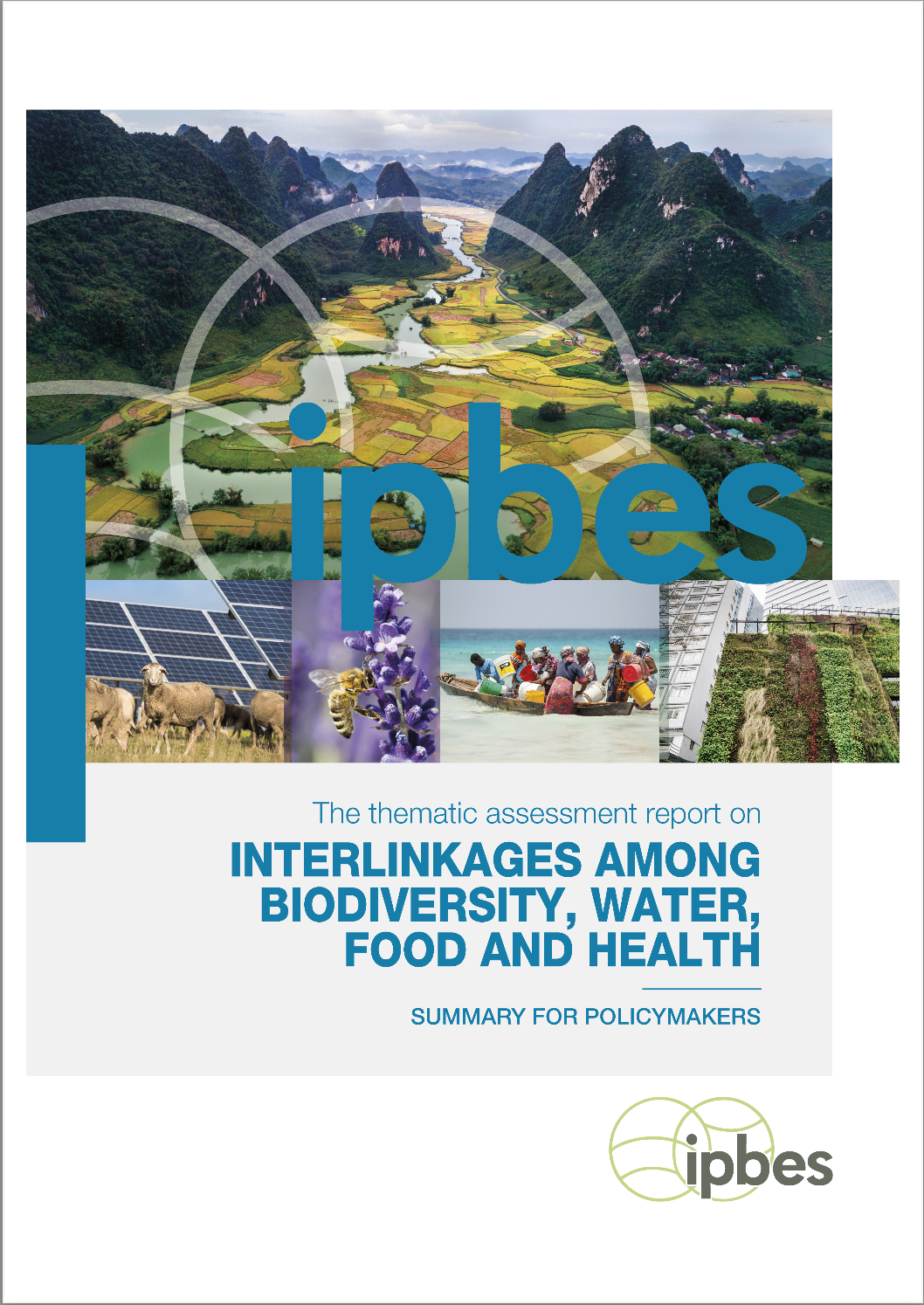
-
IPBES Invasive Alien Species Assessment
Invasive Alien Species Pose Major Global Threats to Nature, Economies, Food Security and Human Health
Key Role in 60% of Global Plant & Animal Extinctions
Annual Costs Now >$423 Billion – Have Quadrupled Every Decade Since 1970
Report Provides Evidence, Tools & Options to Help Governments Achieve Ambitious New Global Goal on Invasive Alien Species
The severe global threat posed by invasive alien species is underappreciated, underestimated, and often unacknowledged. According to a major new report by the Intergovernmental Platform on Biodiversity and Ecosystem Services (IPBES), more than 37,000 alien species have been introduced by many human activities to regions and biomes around the world. This conservative estimate is now rising at unprecedented rates. More than 3,500 of these are harmful invasive alien species – seriously threatening nature, nature’s contributions to people and good quality of life. Too often ignored until it is too late, invasive alien species are a significant challenge to people in all regions and in every country.
Approved on Saturday in Bonn, Germany, by representatives of the 143 member States of IPBES, the Assessment Report on Invasive Alien Species and their Control finds that alongside dramatic changes to biodiversity and ecosystems, the global economic cost of invasive alien species exceeded $423 billion annually in 2019, with costs having at least quadrupled every decade since 1970.
In 2019, the IPBES Global Assessment Report found that invasive alien species are one of the five most important direct drivers of biodiversity loss – alongside changes in land- and sea-use, direct exploitation of species, climate change and pollution. On the basis of this finding, Governments tasked IPBES to provide the best available evidence and policy options to deal with the challenges of biological invasions. The resulting report was produced by 86 experts from 49 countries, working for more than four and a half years. It draws on more than 13,000 references, including very significant contributions from Indigenous Peoples and local communities, making it the most comprehensive assessment ever carried out of invasive alien species around the world.
“Invasive alien species are a major threat to biodiversity and can cause irreversible damage to nature, including local and global species extinctions, and also threaten human wellbeing,” said Professor Helen Roy (United Kingdom), co-chair of the Assessment with Prof. Anibal Pauchard (Chile) and Prof. Peter Stoett (Canada).
The authors of the report emphasize that not all alien species become invasive – invasive alien species are the subset of alien species that are known to have become established and spread, which cause negative impacts on nature and often also on people. About 6% of alien plants; 22% of alien invertebrates; 14% of alien vertebrates; and 11% of alien microbes are known to be invasive, posing major risks to nature and to people. People with the greatest direct dependence on nature, such as Indigenous Peoples and local communities, are found to be at even greater risk. More than 2,300 invasive alien species are found on lands under the stewardship of Indigenous Peoples – threatening their quality of life and even cultural identities.
While many alien species were historically introduced on purpose for their perceived benefits to people, the IPBES report finds that the negative impacts of those that do become invasive are enormous for nature and people. “Invasive alien species have been a major factor in 60% and the only driver in 16% of global animal and plant extinctions that we have recorded, and at least 218 invasive alien species have been responsible for more than 1,200 local extinctions . In fact, 85% of the impacts of biological invasions on native species are negative,” said Prof. Pauchard. Examples of such impacts include the ways that North American beavers (Castor canadensis) and Pacific Oysters (Magallana gigas) change ecosystems by transforming habitats – often with severe consequences for native species.
Nearly 80% of the documented impacts of invasive alien species on nature’s contributions to people are also negative – especially through damage to food supplies – such as the impact of the European shore crab (Carcinus maenas) on commercial shellfish beds in New England and the damage caused by the Caribbean false mussel (Mytilopsis sallei) to locally important fishery resources in India.
Similarly, 85% of documented impacts negatively affect people’s quality of life – for instance through health impacts, including diseases such as malaria, Zika and West Nile Fever, spread by invasive alien mosquito species like Aedes albopictus and Aedes aegyptii. Invasive alien species also damage livelihoods, for example in Lake Victoria where fisheries have declined due to the depletion of tilapia, as a result of the spread of water hyacinth (Pontederia crassipes), which is the world’s most widespread invasive alien species. Lantana (Lantana camara), a flowering shrub, and the black rat (Rattus rattus) are the second and third most widespread globally, with far-reaching impacts on people and nature.
“It would be an extremely costly mistake to regard biological invasions only as someone else’s problem,” said Pauchard. “Although the specific species that inflict damages vary from place to place, these are risks and challenges with global roots but very local impacts, facing people in every country, from all backgrounds and in every community – even Antarctica is being affected.”
The report shows that 34% of the impacts of biological invasions were reported from the Americas, 31% from Europe and Central Asia, 25% from Asia and the Pacific and about 7% from Africa. Most negative impacts are reported on land (about 75%) – especially in forests, woodlands and cultivated areas – with considerably fewer reported in freshwater (14%) and marine (10%) habitats . Invasive alien species are most damaging on islands, with numbers of alien plants now exceeding the number of native plants on more than 25% of all islands.
“The future threat from invasive alien species is a major concern,” said Prof. Roy. “37% of the 37,000 alien species known today have been reported since 1970 – largely caused by rising levels of global trade and human travel. Under ‘business-as-usual’ conditions, we project that total numbers of alien species will continue to increase in this way.”
“But business-as-usual is actually unlikely,” continues Roy. “With so many major drivers of change predicted to worsen, it is expected that the increase of invasive alien species and their negative impacts, are likely to be significantly greater. The accelerating global economy, intensified and expanded land- and sea-use change, as well as demographic changes are likely to lead to increases in invasive alien species worldwide. Even without the introduction of new alien species, already established alien species will continue to expand their ranges and spread to new countries and regions. Climate change will make the situation even worse.” The report underscores that interactions between invasive alien species and other drivers of change will be likely to amplify their impacts – for example invasive alien plants can interact with climate change, often resulting in more intense and frequent fires, such as some of the devastating wildfires experienced recently around the world, releasing even more carbon dioxide into the atmosphere.
The IPBES experts point to the generally insufficient measures in place to tackle these challenges. While 80% of countries have targets related to managing invasive alien species in their national biodiversity plans, only 17% have national laws or regulations specifically addressing these issues. This also increases the risk of invasive alien species for neighbouring States. The report finds that 45% of all countries do not invest in the management of biological invasions.
On a more positive note, the report highlights that future biological invasions, invasive alien species, and their impacts, can be prevented through effective management and more integrated approaches. “The good news is that, for almost every context and situation, there are management tools, governance options and targeted actions that really work,” said Prof. Pauchard. “Prevention is absolutely the best, most cost-effective option – but eradication, containment and control are also effective in specific contexts. Ecosystem restoration can also improve the results of management actions and increase the resistance of ecosystems to future invasive alien species . Indeed, managing invasive alien species can help to mitigate the negative effects of other drivers of change.”
Prevention measures – such as border biosecurity and strictly enforced import controls – are identified by the report as having worked in many instances, such as the successes achieved in Australasia in reducing the spread of the brown marmorated stink bug (Halyomorpha halys). Preparedness, early detection and rapid response are shown to be effective at reducing rates of alien species establishment, and to be especially critical for marine and connected water systems . The PlantwisePlus programme, assisting smallholder farmers in Africa, Asia and Latin America is spotlighted by the report as a good example of the importance of general surveillance strategies to detect new alien species.
Eradication has been successful and cost-effective for some invasive alien species, especially when their populations are small and slow-spreading, in isolated ecosystems such as islands. Some examples of this are in French Polynesia where the black rat (Rattus rattus) and rabbit (Oryctolagus cuniculus) have been successfully eradicated. The report indicates that eradication of alien plants is more challenging due to the length of time that seeds may lie dormant in soil. The authors add that successful eradication programmes depend on, amongst other elements, the support and engagement of stakeholders and Indigenous Peoples and local communities.
When eradication is not possible for different reasons, invasive alien species can often be contained and controlled – especially in land-based and closed water systems, as well as in aquaculture – an example being the containment of the invasive alien Asian tunicate (Styela clava) in aqua-cultured blue mussels in Canada. Successful containment can be physical, chemical or biological – although the appropriateness and effectiveness of each option is dependent on local context. The use of biological control for invasive alien plants and invertebrates, such as introducing a rust fungus (Puccinia spegazzinii) to control bitter vine (Mikania micrantha) in the Asia-Pacific region, has been effective – with success in more than 60% of known cases.
“One of the most important messages from the report is that ambitious progress in tackling invasive alien species is achievable,” said Prof. Stoett. “What is needed is a context-specific integrated approach, across and within countries and the various sectors involved in providing biosecurity, including trade and transportation; human and plant health; economic development and more. This will have far-reaching benefits for nature and people.” Options explored in the report include considering coherent policies and codes of conduct across sectors and scales; commitment and resourcing; public awareness and engagement, such as citizen science campaigns like those promoting ‘check, clean and dry’; open and interoperable information systems; filling knowledge gaps (the authors identify more than 40 areas where research is needed); as well as inclusive and fair governance.
“The immediate urgency of invasive alien species, with extensive and growing harm to nature and people, makes this report so valuable and timely,” said Dr. Anne Larigauderie, the Executive Secretary of IPBES. “The Governments of the world agreed, in December last year, as part of the new Kunming-Montreal Global Biodiversity Framework, to reduce the introduction and establishment of priority invasive alien species by at least 50% by 2030. This is a vital, but also very ambitious commitment. The IPBES Invasive Alien Species Report provides the evidence, tools and options to help make this commitment more achievable.”
– ENDS –
Please note: This French/Spanish version of the media release is being provided as a courtesy translation for media. It is possible that some terminology may still change, based on official translations to still be completed. In the event of a discrepancy between this version and the English version of the media release, the English version should be regarded as definitive.
By the Numbers – Key Statistics and Facts from the Report
Species
- >37,000: alien species established worldwide
- 200: new alien species recorded every year
- >3,500: invasive alien species recorded globally, including 1,061 plants (6% of all alien plant species), 1,852 invertebrates (22%), 461 vertebrates (14%) and 141 microbes (11%)
- 37%: proportion of known alien species reported since 1970
- 36%: anticipated increase in alien species by 2050 compared to 2005, under a “business-as-usual” scenario (assumes past trends in drivers of change continue)
- >35%: proportion of alien freshwater fish in the Mediterranean basin that have arisen from aquaculture
Impacts
- 34%: proportion of impacts reported in the Americas (31% Europe and Central Asia; 25% Asia Pacific; 7% Africa
- 75%: impacts reported in the terrestrial realm (mostly in temperate and boreal forests and woodlands and cultivated areas)
- 14%: proportion of impacts reported in freshwater ecosystems
- 10%: proportion of impacts reported in the marine realm
- 60%: proportion of recorded global extinctions to which invasive alien species have contributed
- 16%: proportion of recorded global extinctions in which invasive alien species have been the sole driver
- 1,215: local extinctions of native species caused by 218 invasive alien species (32.4% were invertebrates, 50.9% vertebrates, 15.4% plants, 1.2% microbes)
- 27%: invasive alien species impacts on native species through ecosystem properties changes (24% through interspecific competition; 18% through predation; 12% through herbivory)
- 90%: global extinctions on islands attributed mainly to invasive alien species
- >$423 billion: estimated annual economic cost of biological invasions, 2019
- 92%: proportion of economic costs of biological invasions attributed to invasive alien species damaging nature’s contributions to people and good quality of life (with the remaining 8% of costs related to biological invasion management)
- >2,300: invasive alien species documented on lands managed, used and/or owned by Indigenous Peoples
- 4x: rise in the economic cost of biological invasions in every decade since 1970
Policy and management:
- 80% (156 out of 196): countries with targets in national biodiversity strategies and action plans for managing biological invasions
- >200%: increase in the last decade in the number of countries with national invasive alien species checklists, including databases (196 countries in 2022)
- 83%: countries without specific national legislation or regulations on invasive alien species
- 88%: success rate of eradication programmes (1,550) conducted on 998 islands
- >60%: success rates of biological control programs for invasive alien plants and invertebrates
Key Tables from the Full Report
These tables are extracted from the full Report (which will be available later this year) and are provided here for ease of reference.
IPBES Partner Comments
Humanity has been moving species around the world for centuries. This practice has brought some positives. However, when imported species run rampant and unbalance local ecosystems, indigenous biodiversity suffers. As a result, invasive species have become one of the five horsemen of the biodiversity apocalypse that is riding down harder and faster upon the world.
While the other four horsemen – changing land- and sea-use, over exploitation, climate change and pollution – are relatively well understood, knowledge gaps remain around invasive species. The IPBES Invasive Alien Species Report is a welcome effort to close these gaps. By providing critical information on trends in invasive species and policy tools to address them, this report can provide a springboard to concrete action on invasive species.
I ask all decision-makers to use this report’s recommendations as a basis to act on this growing threat to biodiversity and human well-being – and make a real contribution to achieving the Kunming-Montreal Global Biodiversity Framework by 2030.
Inger Andersen
Executive Director
United Nations Environment Programme (UNEP)
Invasive alien species pose a substantial threat to livelihoods and food security around the world. They can, for example, manifest as destructive crop or forest pests or displace species targeted by fisheries. They are an important driver of biodiversity loss and hence a threat to the various ecosystem services that support agricultural production and sustainable livelihoods.
The information contained in this report will contribute greatly to efforts to combat the spread of invasive alien species and to meeting Target 6 of the Kunming-Montreal Global Biodiversity Framework. It will be especially valuable for all of us who work to integrate the conservation and sustainable use of biodiversity into the world’s agrifood systems to enhance their productivity and resilience.
QU Dongyu
Director-General
Food and Agriculture Organization of the United Nations (FAO)
Invasive alien species — plants, animals or microorganisms that are introduced intentionally or unintentionally into areas where they are not native — remain one of the most striking symptoms of the adverse effect of human activities on our natural world. They not only contribute to wildlife species extinctions, but also pose a rapidly growing risk to progress on the Global Goals — affecting entire ecosystems, economies and food security to human health, wellbeing, and livelihoods.
As anthropogenic factors such as climate change provide the perfect petri dish for alien species to multiply and spread, our decisions and actions must be rooted in a comprehensive understanding of this threat and its future implications.
Addressing this need, this timely analysis by IPBES combines the latest science, data, and new thinking to guide countries, communities, and the United Nations family to prevent, mitigate, and manage invasive alien species, a pivotal step towards advancing the Kunming-Montreal Global Biodiversity Framework targets. That includes leveraging invaluable local knowledge and outlining a range of practical solutions.
This new understanding will allow our global community to take new measures to protect both people and planet from the unwanted and severe consequences of invasive alien species.
Achim Steiner
Administrator
United Nations Development Programme (UNDP)
Invasive alien species are one of the five main direct drivers of biodiversity loss globally and the threats they pose to species, to ecosystems and to human well-being are rapidly increasing.
The Kunming-Montreal Global Biodiversity Framework, in its Target 6, aims to tackle the impacts of invasive alien species on biodiversity and ecosystem services, and to reduce the rate of introduction and establishment of invasive alien species by at least 50% by 2030. This is an ambitious target, especially when we consider the increasing levels of global trade and travel.
The IPBES Assessment will provide the best available scientific knowledge to help countries and stakeholders understand and address this growing threat. It will identify tools and policy measures for identifying and regulating pathways of introduction and for eliminating or controlling invasive species that have already been established. Critically, the assessment will take into account different value systems and help to focus actions on priority species, pathways and sites.
Congratulations to IPBES for this critical work. I look forward to seeing its active use by Parties and stakeholders. I believe it will be a critical resource to facilitate the urgent actions necessary to achieve Target 6 and work towards living in harmony with nature.
David Cooper
Acting Executive Secretary
The Convention on Biological Diversity (CBD)
Note to Editors:
For enquiries and interviews please contact:
The IPBES Media Team
media@ipbes.net
www.ipbes.net
+1-416-878-8712
IPBES has now released the Summary for Policymakers (SPM) of the Invasive Alien Species Report. The SPM presents the key messages and policy options, as approved by the IPBES Plenary. To access the SPM, photos, ‘B-roll’ and other media resources go to: www.bit.ly/IASMedia The full six-chapter Report (including all data) will be published later this year.
About IPBES:
Often described as the “IPCC for biodiversity”, IPBES is an independent intergovernmental body comprising more than 140 member Governments. Established by Governments in 2012, it provides policymakers with objective scientific assessments about the state of knowledge regarding the planet’s biodiversity, ecosystems and the contributions they make to people, as well as the tools and methods to protect and sustainably use these vital natural assets. For more information about IPBES and its assessments visit www.ipbes.net
Video introduction to IPBES: www.youtube.com/watch?v=oOiGio7YU-M
Additional videos:
- IPBES Assessment of the Diverse Values and Valuation of Nature (2022)
https://www.youtube.com/watch?v=-jju7gD2XYE - IPBES Assessment of the Sustainable Use of Wild Species(2022)
https://youtu.be/ZflgQkb3c8Q - IPBES Global Assessment of Biodiversity and Ecosystem Services (2019):
https://youtu.be/7eYK5ibTOMA - IPBES Assessment of Land Degradation and Restoration (2018):
www.youtube.com/watch?v=KCt7aai17NkIPBES - Regional Assessments of Biodiversity and Ecosystem Services (2018):
www.youtube.com/watch?v=kR0HeepbWCc - IPBES Assessment of Pollinators, Pollination and Food Production (2016):
www.youtube.com/watch?v=YwkYbeiwK5AIPBES - Assessment of Scenarios and Models of Biodiversity (2016):
www.youtube.com/watch?v=wZfcDmtGa9I
Share this article
Latest articles
September 4, 2025




